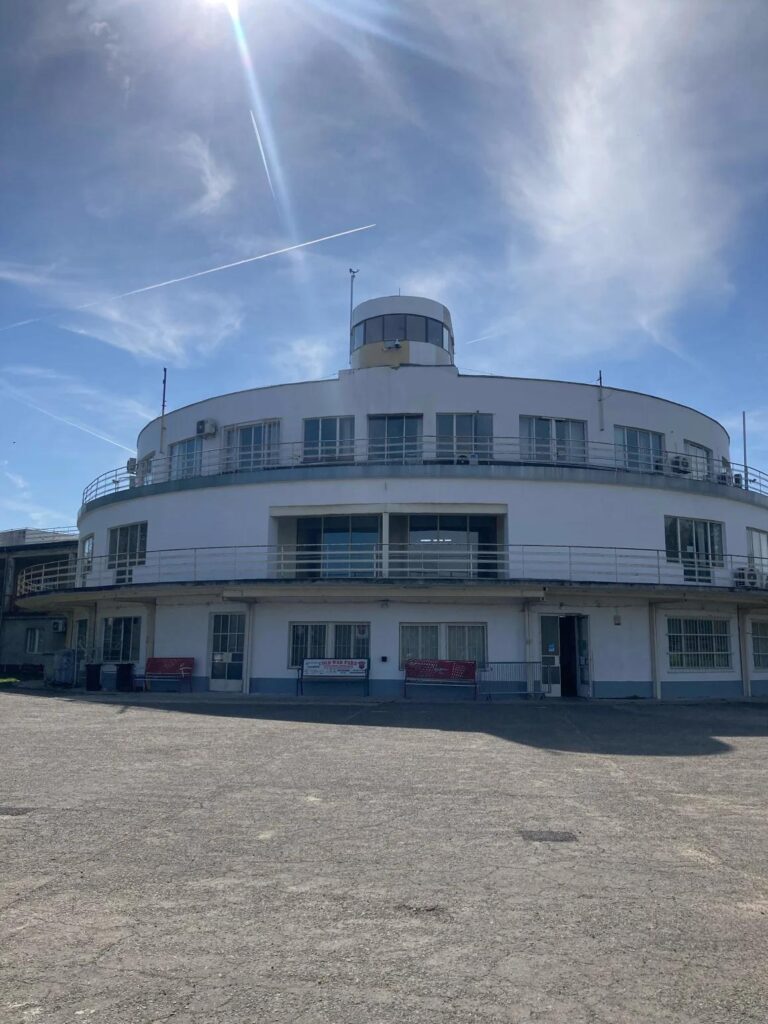Tucked away just outside Budapest lies Budaörs Airport, Hungary’s first international airport—an extraordinary relic from 1937, designed in the sleek, functionalist Bauhaus style. Once a bustling hub for pioneering flights, today the site stands remarkably well-preserved, offering an evocative glimpse into early modernist airport architecture .

🏛️ A Portal to 1930s Design
Budaörs features clean lines, geometric forms, and unadorned surfaces—iconic hallmarks of Bauhaus design. Its elegant terminal building, control tower, and hangars speak to a vision of progress and simplicity. As one CNN-style feature notes:
“Budaörs, Hungary’s oldest airport, has been operating continuously since 1937, and its Bauhaus-design buildings are like a portal…” .
Yet, despite its architectural pedigree, it was sidelined in 1950 when Budapest’s newer Ferihegy (now Liszt Ferenc Airport) took over.
🎯 An Aviation Time Capsule
Rather than being demolished or extensively modernised, Budaörs has remained mostly intact—a rare survivor of early aviation infrastructure. Inside, you’ll find:
- The original check-in desks, windows, and waiting lounges,
- A restored control tower perched above the runway,
- Hangars that still echo with the creak of vintage planes and hangar doors.
The preservation gives visitors a potent sense of what it felt like to travel in the golden early days of air travel.
🎥 See the Airport Today
While there’s no official tour video yet, several drone clips on YouTube capture the pristine fidelity of terminal and tower exteriors. This footage highlights the building’s minimalist silhouettes as they catch the golden light, offering a moving visual tribute to modernist design.

🗣️ Why It Matters
Architectural critics and historians stress the airport’s value on multiple fronts:
- It’s a living museum, contrasting sharply with the sleek glass-and-steel terminals that dominate today.
- A study site for design students, showcasing how form and function were balanced nearly a century ago.
- An enduring symbol of Hungary’s aeronautical heritage, reminding us of a time when air travel was as much about style as speed.
🔮 Can this Gem Be Revived?
The airport’s future remains uncertain. Some proposals suggest adaptive reuse—perhaps as a public aviation museum or an event space preserving its iconic 1930s features. As one observer wrote:
“Bauhaus-design buildings are like a portal…” .
Whether restored or repurposed, Budaörs has potential to serve as a cultural landmark for both design enthusiasts and aviation buffs.
✅ Final Thoughts
Budaörs Airport is Europe’s hidden Bauhaus treasure: a beautifully preserved airport that tells a story of innovation and design optimism from the 1930s. Its minimalist architecture, intact interiors, and historical gravity make it a rare find—worthy of recognition and careful preservation. As modern travel forgets its origins, this time capsule stands ready to remind us of where aviation—and modern architecture—once soared.



